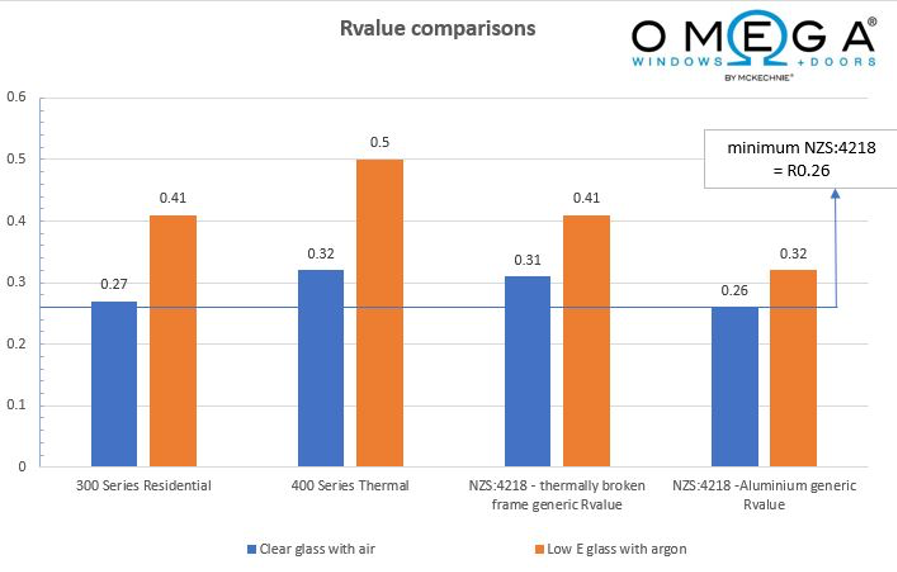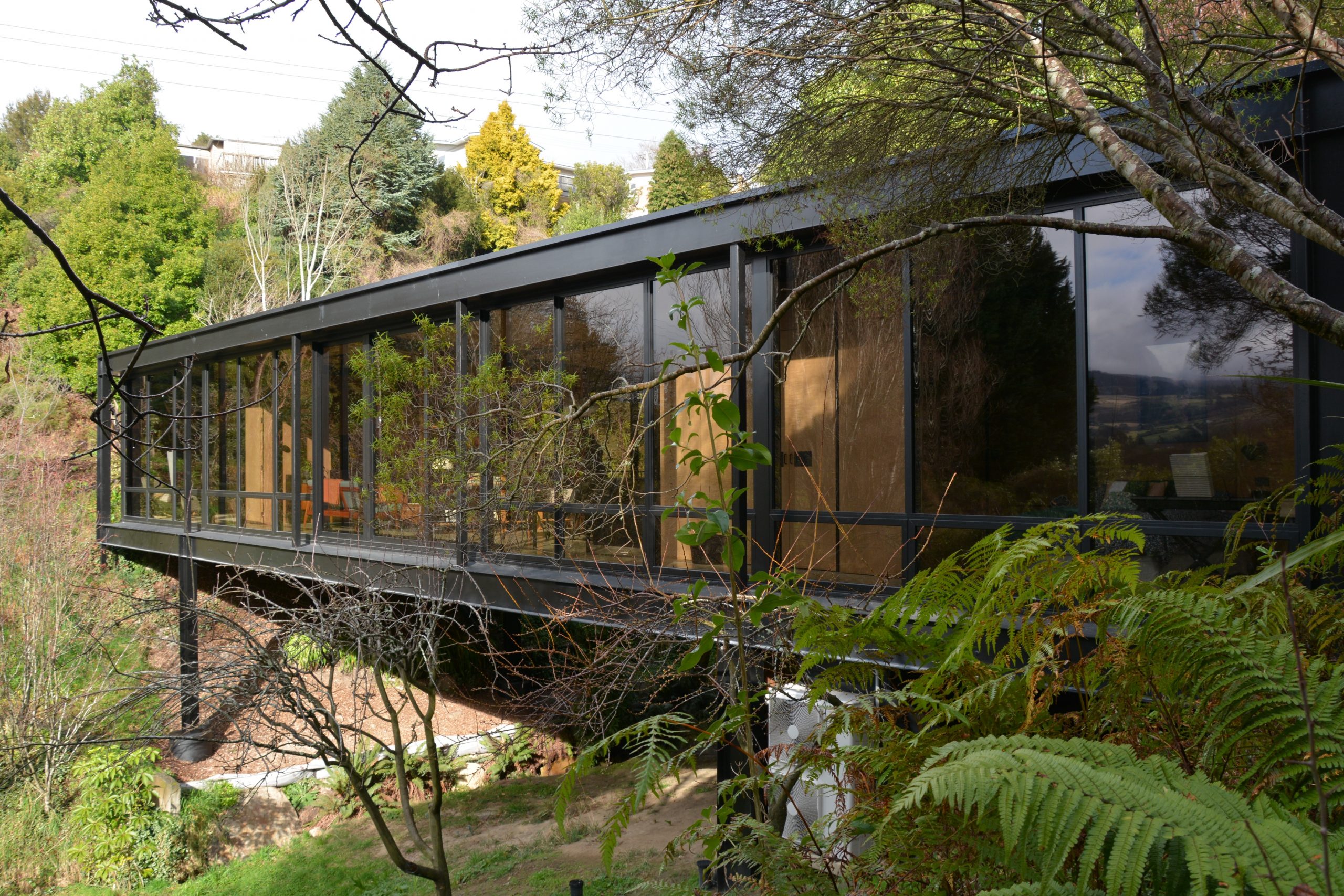Podcast: Play in new window | Download | Embed
Aluminium is stable, completely recyclable and relatively abundant, but it’s also a great conductor of heat. It’s the dominant choice of material for window and door frames in New Zealand, accounting for 90% of the market. But how can you make it a more sustainable choice? OMEGA Windows and Doors offers some good options.

Dyann Stewart learnt computer-aided design (CAD) while working as a receptionist for New Zealand sailor Digby Taylor. With this valuable skill, Dyann soon found herself working as a junior designer for Nulook. From Nulook, she worked briefly with Fletcher Aluminium as a Technical Advisor, and then on to Fairview where she eventually become Group Technical Manager.
She is now the Business Development Manager at OMEGA Windows and Doors where she’s already helped the company achieve the significant accreditation of becoming the first Red List Free aluminium joinery supplier in New Zealand.
Leaky Buildings
Dyann says that the peak of the ‘leaky building‘ crisis in New Zealand was one of the hardest times for her in the profession because windows got a lot of the blame. She explains that a large part of the problem was a general lack of understanding about pressure equalization. Without this knowledge, it doesn’t matter if it’s a window, a power box or a balcony. Any junction or penetration through the envelope is a potential point of moisture ingress if it’s not detailed well.
This problem hasn’t gone away. We still have junctions and we’re still in a humid climate. Much of the problem exists due to a lack of understanding of pressure equalisation.
Pressure Equalisation
We’re familiar with atmospheric pressure, caused by the weight of air in the atmosphere. Atmospheric pressure changes constantly in response to changes in air temperature and relatively humidity and the relative change in atmospheric pressure is used to help predict the weather.
There is also air pressure inside our buildings. If our buildings are warmer than the outside, then the pressure inside is also greater than outside. But a strong wind on one side of the house can easily override this gradient, thereby inducing water through the building envelope.
The aim of pressure equalisation is to reduce any pressure gradient across the building envelope because wherever there’s a pressure gradient, there’s a driving force for air and water.
Sealing Windows Well
Dyann described some of the typical options currently used for sealing windows into walls and the risks involved in getting this wrong.
A typical mistake is to seal the outside of the frame in an attempt to stop water getting in from the outside. This is good logic but it falls apart in reality because seals aren’t perfect and when rain does eventually get in, it’s much harder for it to get out again.
Expanding foam and wet seals on the interior are other common choices.
My personal recommendation is to talk to the team at Pro Clima about using tapes to properly seal windows. (As an employee of Pro Clima NZ, I’m biased, so make sure you do your own research.)
Who Makes Windows?
I asked Dyann to describe the parties involved in actually making aluminium windows.
System Suppliers
Firstly, there’s the system supplier. This is the space that Dyann has spent most of her career and where OMEGA Windows and Doors sit. The system supplier makes extruded aluminium sections and designs the components that can be used to join the sections together in order to form a window frame. Importantly, the supplier also tests these components against the relevant standards and makes sure that the system will comply with the building code.
Fabricators
System suppliers don’t generally make the windows that go into buildings. As Dyann explains it, fabricators are the ones who do all the front line work. Fabricators quote, assemble the components, and project manage the delivery of completed windows to site.
The Cost of Designer Windows
In the US and Europe, where the scale is an order of magnitude greater than New Zealand, windows are available ‘off the shelf’. In New Zealand and a lot of Australia, nearly every window is bespoke. The size of the hole is measured on-site and the fabricator makes windows to suit the size of the whole and to the specifications of the design. Compared to the rest of the world, this process is neither efficient nor cost-effective. But without the larger scale of other markets, it’s difficult to see how this might change, particularly as designers are used to the flexibility of designing windows to match their vision, rather than designing a building around a fixed set of window options.
Offsite Modular Construction
Dyann suggests that offside modular construction of windows and other building elements could be a great solution for smaller markets such as New Zealand. If we establish this industry well, modular local modular construction offers the opportunity to bring prices down while also supporting local businesses.
OMEGA Windows and Doors

Dyann chose to work at OMEGA Windows and Doors because of their sustainability.
OMEGA is the only aluminium joinery company in New Zealand that uses ‘remelt’. 85% of their aluminium comes from recycled material.
Dyann has already made a significant further contribution to OMEGA’s sustainability credentials by gaining Red List Free accreditation from the International Living Future Institute.

Thermally Broken Performance
The required minimum R-value for windows in New Zealand is shockingly low at just 0.26 m²K/W. This is the total R-value of the whole window, including frame and glass. The type of frame, coatings on the glass, the thickness of the glass, the gas in between the glass and any thermal breaks or edge spacers – will all impact this overall R-value.
Aluminium frames start at a thermal disadvantage compared to timber or uPVC joinery because aluminium is such a good conductor of heat. This is great for saucepans, but not so good for building materials. The thermal performance of aluminium window frames can be greatly improved by adding a thermal break between the outside and the inside. Dyann has completed some analysis of the OMEGA Thermal suite to show how much better than code they perform.

It’s also possible to look at the predicted surface temperatures of window profiles. This thermal bridging analysis is helpful to assess the risk of condensation occurring on the interior surface of the frame.

For more information about OMEGA Window and Doors, check them out online or follow them on Facebook and LinkedIn.

Leave a Reply